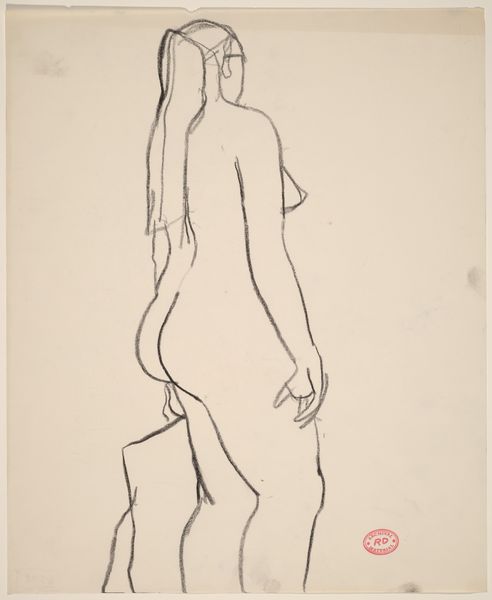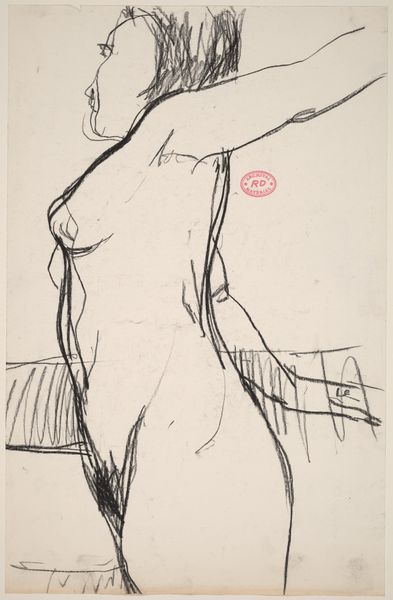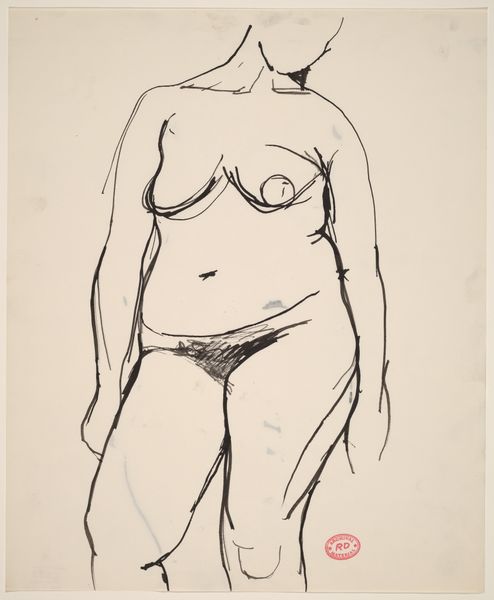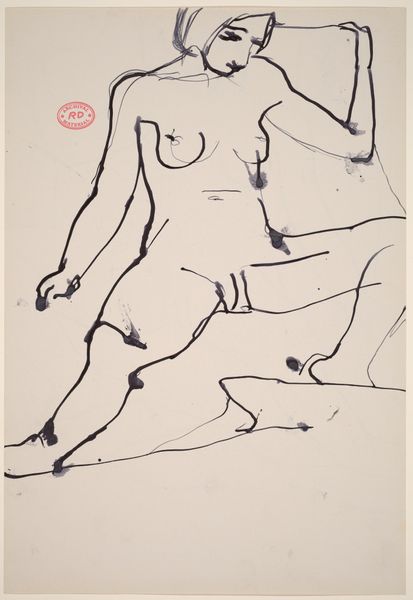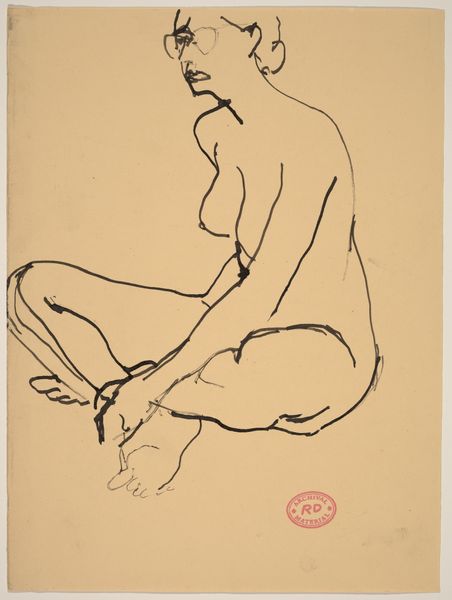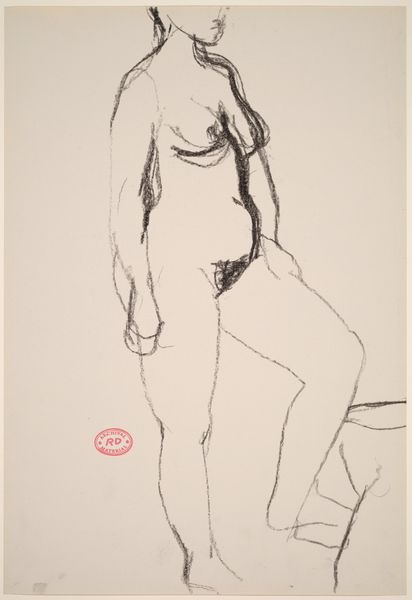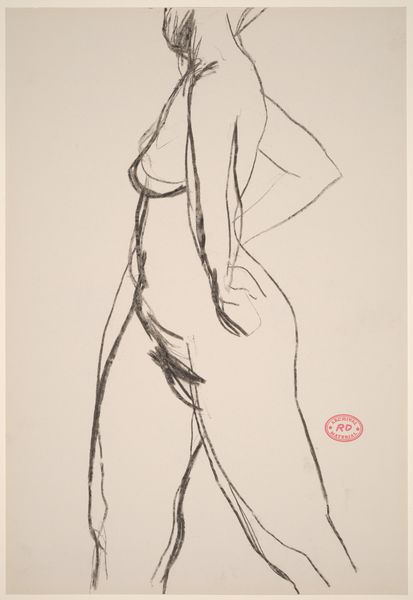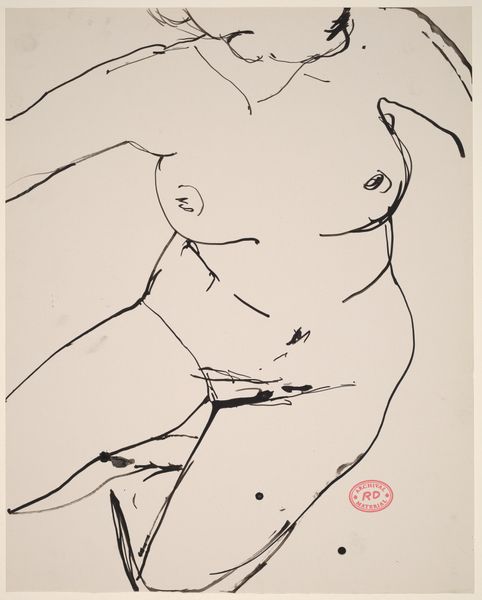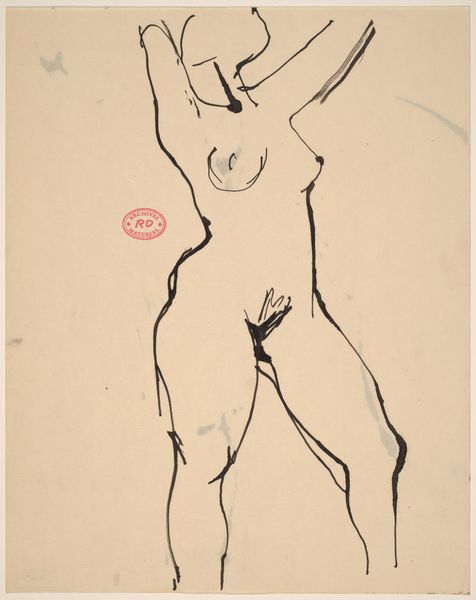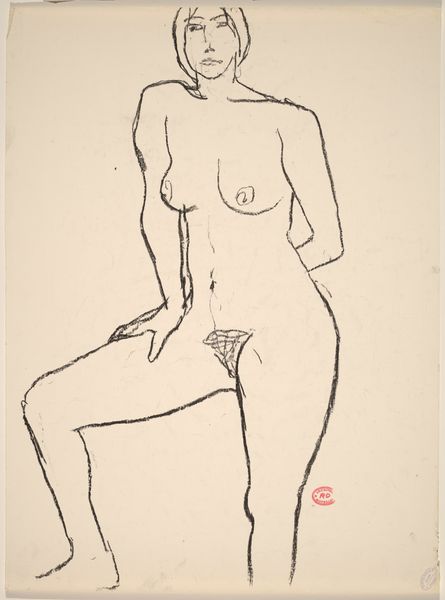![Untitled [side view of female nude looking down] by Richard Diebenkorn](/_next/image?url=https%3A%2F%2Fd2w8kbdekdi1gv.cloudfront.net%2FeyJidWNrZXQiOiAiYXJ0ZXJhLWltYWdlcy1idWNrZXQiLCAia2V5IjogImFydHdvcmtzL2VjMjc5ODdjLWNmNGQtNDZjMS04MDc4LWNkNmUzYmY3ZTY3Yy9lYzI3OTg3Yy1jZjRkLTQ2YzEtODA3OC1jZDZlM2JmN2U2N2NfZnVsbC5qcGciLCAiZWRpdHMiOiB7InJlc2l6ZSI6IHsid2lkdGgiOiAxOTIwLCAiaGVpZ2h0IjogMTkyMCwgImZpdCI6ICJpbnNpZGUifX19&w=3840&q=75)
Untitled [side view of female nude looking down] 1955 - 1967
0:00
0:00
drawing, acrylic-paint
#
drawing
#
acrylic-paint
#
figuration
#
bay-area-figurative-movement
#
line
#
nude
Dimensions: sheet: 43.2 x 27.9 cm (17 x 11 in.)
Copyright: National Gallery of Art: CC0 1.0
Curator: Richard Diebenkorn’s, Untitled [side view of female nude looking down], completed between 1955 and 1967, greets us with striking simplicity. Drawn with what seems like confident, fluid lines of acrylic paint, the work explores the age-old theme of the nude in a way that feels utterly modern. Editor: Modern indeed. My first thought? That charcoal outline captures such vulnerability, you know? There’s an almost hesitant quality in the bowed head. Like she’s retreated into herself. Curator: That’s an insightful take. The bowed head invites contemplation of classical depictions of modesty. But instead of coyly averting her gaze, there's a weightiness there, perhaps reflective of the mid-century psychological anxieties present at that time. Editor: Or maybe it's just good ol’ shyness! Diebenkorn wasn’t shy about that line though, was he? Quick strokes, thick and thin, leaving those sketchy remnants, building the figure out of almost, not quite, closed contours. It lends the form such intimacy. Curator: That reminds me of something... Think of the Venus Pudica and other images with their intricate rendering. Then see Diebenkorn embracing a more stripped-down visual vocabulary here. What symbols can endure if we move away from established forms? That’s the central question! Editor: Hmmm, right. But the emotional core feels deeper, don't you think? Look, how that single curving line defines her back, flowing seamlessly down to suggest her leg. Almost architectural, and yet so, so tender. He sees her. Really sees her. And in that glimpse, so do we. Curator: True! The line, indeed. The way its movement, the figure in her entirety—is simultaneously representational and deeply abstract. Diebenkorn doesn’t merely show us a nude; he provides the foundation for us to construct meaning about how we perceive her humanity and our own. Editor: I feel like I understand her. Even without seeing her face. Even in these sparse lines, you know? Diebenkorn gives her a silent story, waiting to be voiced. Curator: The emotional nuance—something almost fragile captured with such bold lines. It exemplifies Diebenkorn’s commitment to revealing a sustained conversation about what’s left when certain things are stripped away and how new signs might evolve out of something familiar. Editor: Yeah, seeing this has really stirred something up inside, just this raw essence of form and emotion blending together. Beautiful.
Comments
No comments
Be the first to comment and join the conversation on the ultimate creative platform.


